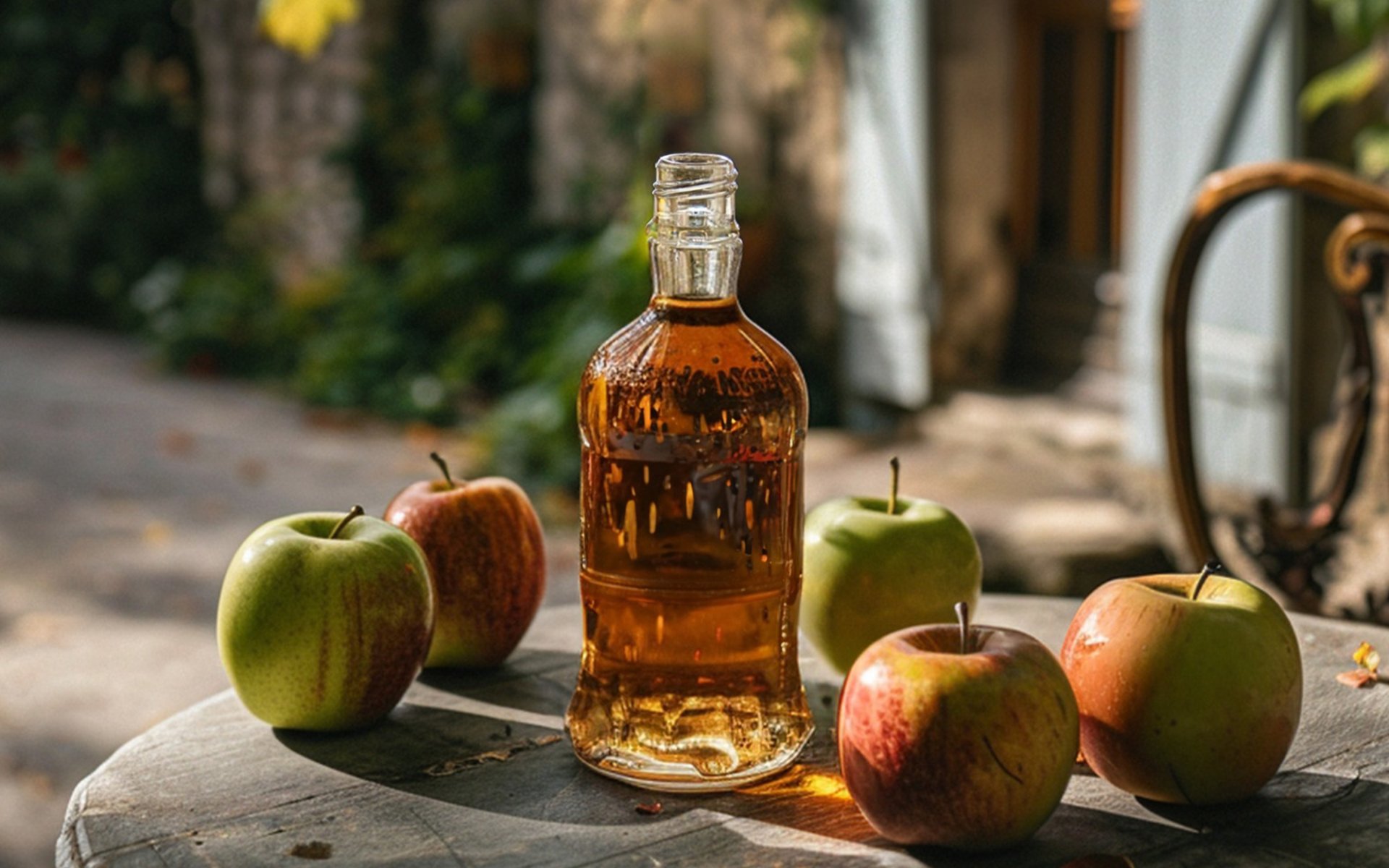Calvados

Calvados, or simply Calva as locals call it, is a superb apple brandy from France. It's produced from cider (fermented apple juice) made from special apple varieties, with its origin protected by the Appellation d'Origine Contrôlée (AOC) law, which dictates it can only be produced in the Normandy region. Today, Rimping Supermarket invites you to discover this apple brandy with its rich historical narrative.
Origins and Early Development (16th - 17th Century)
The origins of Calvados date back to the 16th century. Gilles de Gouberville, a Norman lord, documented the distillation of apple cider to make Eau-De-Vie (fruit brandy) in his records in 1553 AD. This laid the groundwork for the production of Calvados in later eras.
During the Middle Ages, the Normandy region gained renown for its apple cultivation, leading to the development of various apple varieties specifically for cider production. By the 17th century, the distillation of cider into Calvados (at this time referred to as Eau-de-vie du Calvados) became increasingly widespread. Local producers began refining distillation techniques according to their own recipes, leading to the establishment of numerous small distilleries.
During this period, Calvados was a popular drink among the working class in Normandy, often added to coffee and consumed in the morning before work. This method of drinking involved pouring about 1 ounce of Calvados into a coffee cup, then adding hot coffee, stirring, and slowly sipping. This practice later became known as Café Calva.
A Pivotal Turning Point: The Phylloxera Crisis and Growth (19th Century)
Initially, Calvados remained primarily popular within Normandy. However, the 19th century marked a significant turning point for the Calvados industry, as French vineyards were devastated by a pest called Phylloxera. This affected almost all vineyards in France, broadly impacting the production of wine, as well as grape-based brandies and cognacs.
This unexpected event proved to be a golden opportunity for Calvados. As brandy and cognac production halted for many years, consumers turned to apple brandy as an alternative. This led to Calvados gaining widespread popularity beyond the confines of Normandy, and during this same period, over 100,000 distilleries emerged in Normandy.
Protected Designation and Production Process (1942 AD - Present)
In 1942, the French government introduced the Appellation d'Origine Contrôlée (AOC) law to certify the quality of French agricultural products and foods. Calvados also received this certification, stipulating that it must be produced using traditional methods exclusively in Normandy to be called Calvados.
The production of Calvados is a meticulous process, beginning with the careful selection of apples, often from over 200 different varieties, categorized into four groups: sweet, bittersweet, bitter, and tart.
Furthermore, production is divided into three main types:
- Calvados AOC: This type adheres to strict AOC quality standards, with rigorous regulations concerning origin, apple varieties, production methods, and aging duration. It is primarily produced in lower Normandy and must use at least 70% of apples from an authorized list of varieties. It is aged in oak barrels for a minimum of 2 years.
- Calvados Pays d'Auge: This must be produced within the Pays d'Auge area, a region in eastern Normandy. It requires at least 80% of apples from an authorized list of varieties. The cider must ferment for at least 6 weeks and undergo double distillation in an alembic pot still. It must then be aged in oak barrels for a minimum of 2 years.
- Calvados Domestique: This type is not as strictly regulated as Calvados AOC and Pays d'Auge. It can be produced using any apple variety, and its production methods are not as stringent. Furthermore, it is not required to be aged in oak barrels for a specified period. Consequently, this type of Calvados is more affordable than the others.
In addition to these three main types, Calvados can also be categorized by its aging period:
- Fine, VS, Very Special, Three Stars, or Three Apples: Aged for a minimum of 2 years.
- Reserve or Old: Aged for a minimum of 3 years.
- V.O., VSOP, or Vieille Réserve: Aged for a minimum of 4 years.
- Hors dâge, XO, Très Vieille Réserve, Très Vieux, Extra, or Napoleon: Aged for a minimum of 6 years.
Today, Calvados is recognized worldwide and can be enjoyed in various ways: neat as a digestif, mixed with coffee in the morning, or used as an ingredient in cocktails like French 75 and Calvados Old Fashioned.


